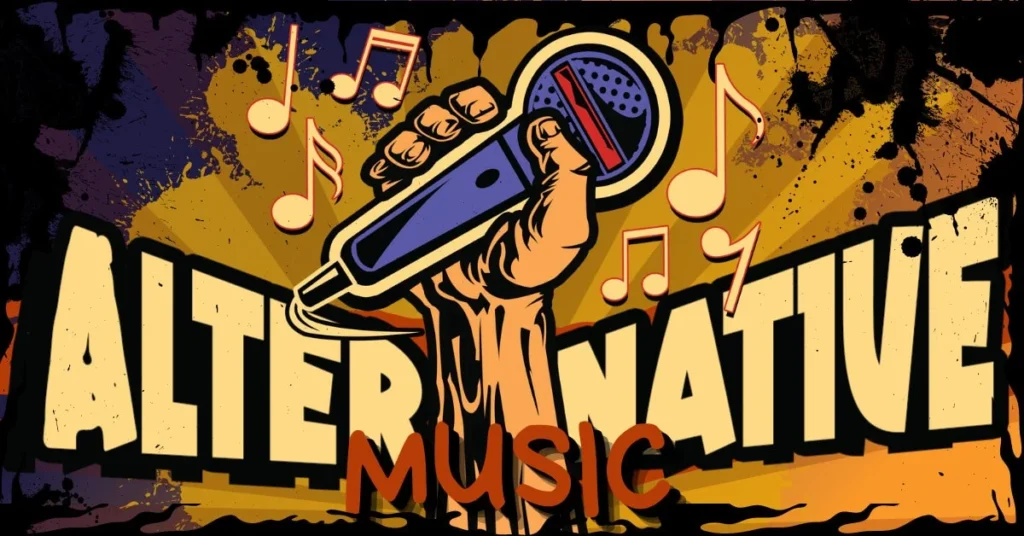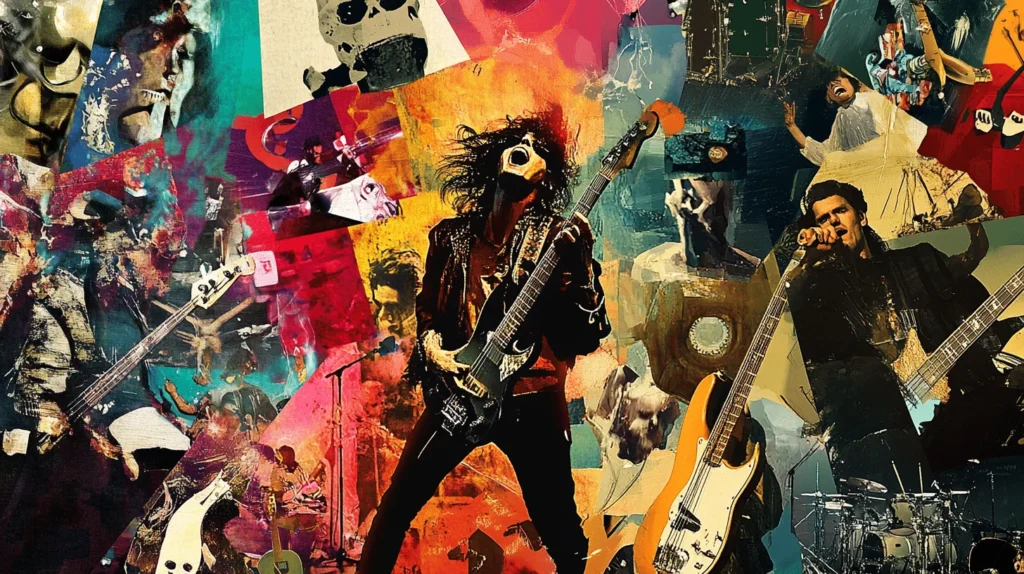Genre blend has shaped some of the most iconic and influential albums and tracks in music history. These case studies showcase how artists from various backgrounds successfully merged different musical styles to create groundbreaking works that transcended conventional genre boundaries. In this section, we’ll explore the key elements of successful genre blending through well-known examples.

Table of Contents:
1. Radiohead – Kid A (2000)

Genres Blend: Alternative Rock Music, Electronic, Experimental
Radiohead’s Kid A is often seen as one of the best examples of mixing different music styles. Instead of sticking to the guitar-heavy rock sound they were known for, the band tried something new by adding electronic music, jazz, ambient sounds, and experimental ideas.
Key Elements of Genre Blending:
- Electronic Sounds: They used synthesisers, drum machines, and samples to create music that felt very different from their older songs.
- Jazz and Classical Touches: Songs like “Everything In Its Right Place” and “Idioteque” mix jazz-like song structures with unusual sounds often found in classical music, like dissonance (clashing notes).
Why It Matters:
When Kid A first came out, some fans were unsure about the new direction. But over time, it became highly praised for being brave and original. It helped open the door for more artists to mix genres in creative ways in the 2000s and beyond.
2. Beyoncé – Lemonade (2016)
Genre Blend : R&B, Hip-Hop, Rock, Country, Blues, Pop
Beyoncé’s Lemonade is an album where she mixes lots of different music styles. She uses sounds from R&B, rock music, country, and more to tell stories about her life—like feeling sad, strong, in love, or hurt. The music changes in each song to match the feelings.
Key Elements of Genre Blending:
- “Don’t Hurt Yourself” – This song sounds loud and strong like rock music. Beyoncé sings with a lot of power, and there’s a famous rock singer, Jack White, on it too.
- “Daddy Lessons” – This one sounds like country music, with guitar and a story about her dad. But she still sings in her R&B style.
Why It’s Special:
People loved Lemonade because it was energetic, different, and full of feelings. It showed how mixing different types of music can make something unique and new.
3. Lil Nas X – “Old Town Road” (2019)
Genre Blend: Country, Hip-Hop, Trap
“Old Town Road” was a super popular song in 2019. It mixed country music (which tells stories about cowboys and uses guitars) with hip-hop and trap music (which has strong beats and cool sounds). People were surprised and excited by how different and fun it was.
Key Elements of Genre Blending:
- Country Sounds: The song has a banjo (a country music instrument) and talks about cowboy stuff like horses and hats.
- Trap Beats: It also has loud bass and drum beats that you hear in hip-hop songs today.
Why It’s Special:
“Old Town Road” became one of the biggest songs ever—it stayed at #1 on the music charts longer than any other song! Some people argued about whether it was a country song or not, but most agreed it was cool how it mixed different kinds of music. It showed that songs can be made in new, creative ways.
4. Gorillaz – Demon Days (2005)

Genre Blend: Rock, Rap, Electronic, Funk
Gorillaz is a band made of cartoon characters, but real people make the music. Their album Demon Days uses many kinds of music to make fun and interesting songs.
Key Elements of Genre Blending:
- Different Singers: The band works with lots of people—some sing, some rap, and some make cool beats.
- Mix of Sounds: The song “Feel Good Inc.” has a fun beat, rapping, and singing all together. “DARE” is a song that makes you want to dance with its electronic sounds.
Why It’s Cool:
Lots of people loved this album because the songs sound so different and creative. Gorillaz showed that you can mix many kinds of music and still make something awesome.
5. Kanye West – Yeezus (2013)
Genre Blend: Hip-Hop, Electronic, Dancehall, Industrial
Kanye West made Yeezus by mixing hip-hop with loud electronic sounds, hard beats, and music from places like Jamaica (called dancehall and reggae). The songs sound very different from his older music.
Key Elements of Genre Blending:
- Loud and Electronic Sounds: A song like “Black Skinhead” has big, noisy beats and sounds like machines—kind of like robot music!
- Dancehall Beats: In “Send It Up,” you can hear fun rhythms and sounds from dancehall music, which makes you want to move.
Why It’s Cool:
When it first came out, some people didn’t like it because it sounded so different. But later, many people thought it was smart and creative. It showed other artists that it’s okay to try new things and mix different genres of music.
6. Linkin Park – Hybrid Theory (2000)
Genres Blend: Rock, Rap, Electronic
Hybrid Theory is Linkin Park’s first album, and it was super popular. The band mixed loud rock music with rap and electronic sounds to make something new and exciting.
Key Elements of Genre Blending:
- Rap and Rock Together: One band member, Mike, raps, while another, Chester, sings and screams like in rock music. The mix of both makes the songs really powerful.
- Cool Electronic Sounds: Songs like “In the End” and “Crawling” have special beats and sounds made with computers, which makes the music sound even cooler.
Why It’s Special:
This album became one of the biggest hits of the 2000s. Lots of people liked it—whether they loved rock music or rap. It helped start a new kind of music where different styles came together.
7. OutKast – Speakerboxxx/The Love Below (2003)

Genres Blend: Hip-Hop, Funk, Pop, Jazz
OutKast made a big album with two parts—one by Big Boi and one by André 3000. Big Boi’s part (Speakerboxxx) sounds more like regular hip-hop, and André’s part (The Love Below) is full of fun, different sounds like pop, jazz, and funk.
Key Elements of Genre Blending:
- Funky and Jazzy Songs: André 3000 made fun songs like “Hey Ya!” and “Roses” that mix pop, jazz, and funky beats. They sound super fun and different.
- Hip-Hop with a Twist: Big Boi’s songs sound more like old-school hip-hop but still have fun, groovy music in them too—like funk and soul.
Why It’s Cool:
The album was a huge hit and even won a big music prize called a Grammy. People loved how OutKast mixed so many music styles and weren’t afraid to try new things with hip-hop.
8. SZA – Ctrl (2017)
Genre Blend: R&B, Hip-Hop, Alternative
SZA’s album Ctrl is full of songs about her feelings and life. She mixes soft, smooth singing (R&B and soul) with cool beats from hip-hop. The music feels dreamy but also real and emotional.
Key Elements of Genre Blending:
- Soft and Cool Sounds: The music is calm and gentle, with hip-hop beats and electronic sounds that make it feel modern and unique.
- The mix of Singing and Beats: Songs like “The Weekend” and “Love Galore” sound smooth and relaxing, with SZA singing soulfully over trap-style beats.
Why It’s Special:
Ctrl became super popular, and lots of people loved it. It showed that R&B music can sound new and different when you mix in other styles. It also inspired other artists to try mixing styles too!
Conclusion
These examples show how mixing different music styles can change the way we make and listen to music. Artists like Radiohead, Beyoncé, and Lil Nas X didn’t just try something new—they helped shape what music can be, both in sound and in popularity. Even though mixing genres can be tricky, it can also create amazing songs and albums that people remember for a long time. When done well, genre-blending brings fresh ideas and helps music grow in exciting ways.


